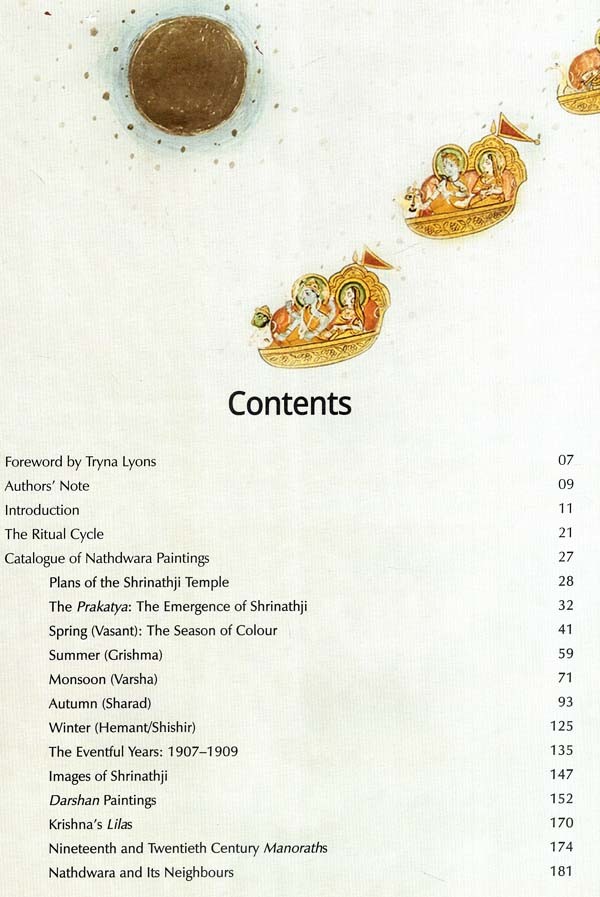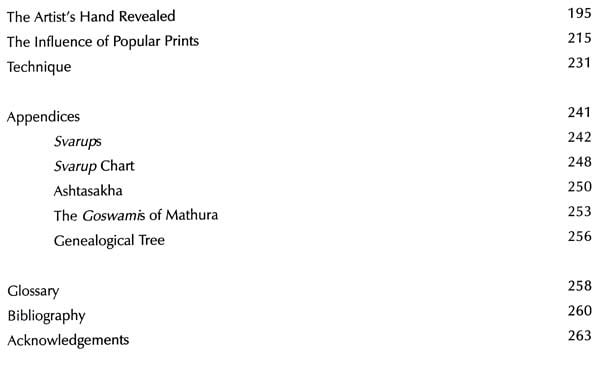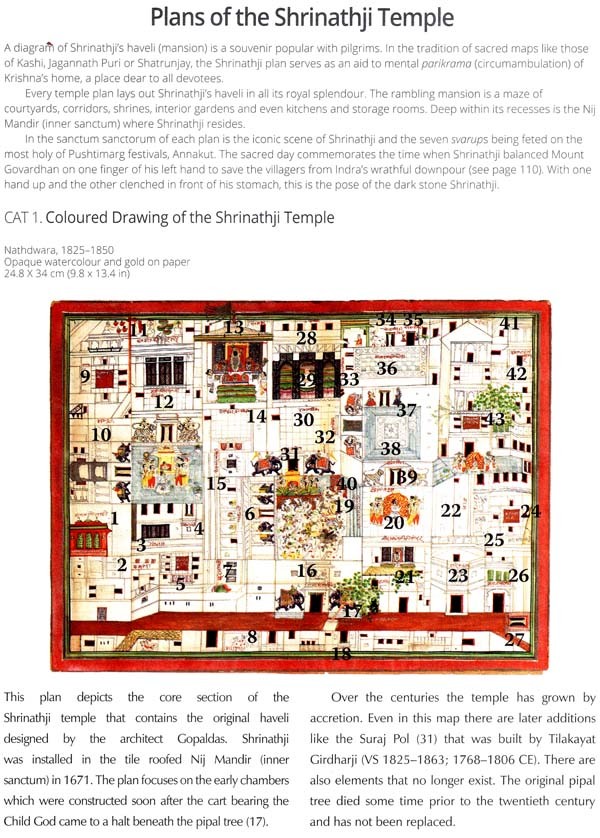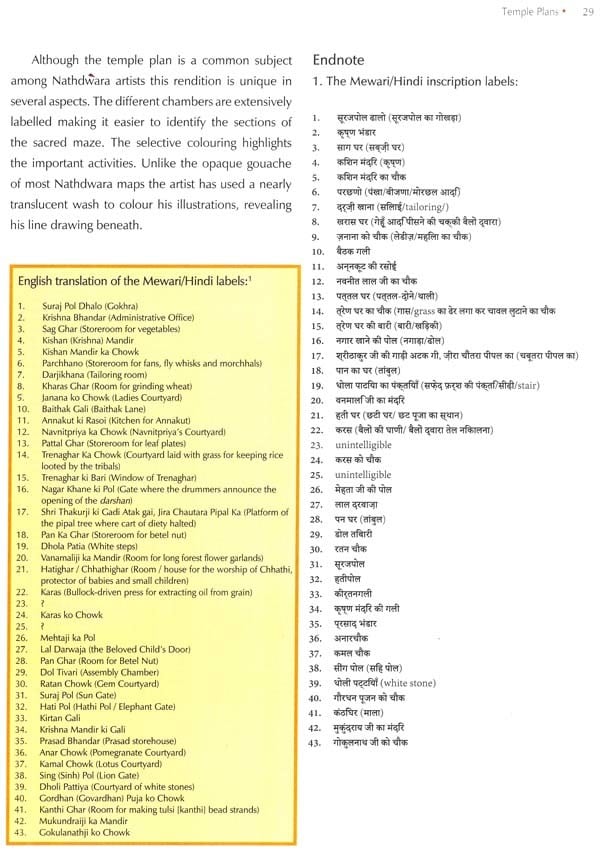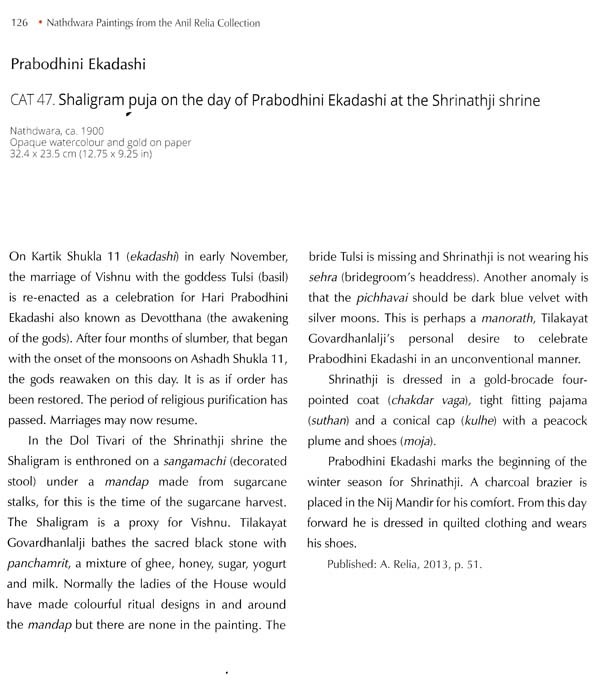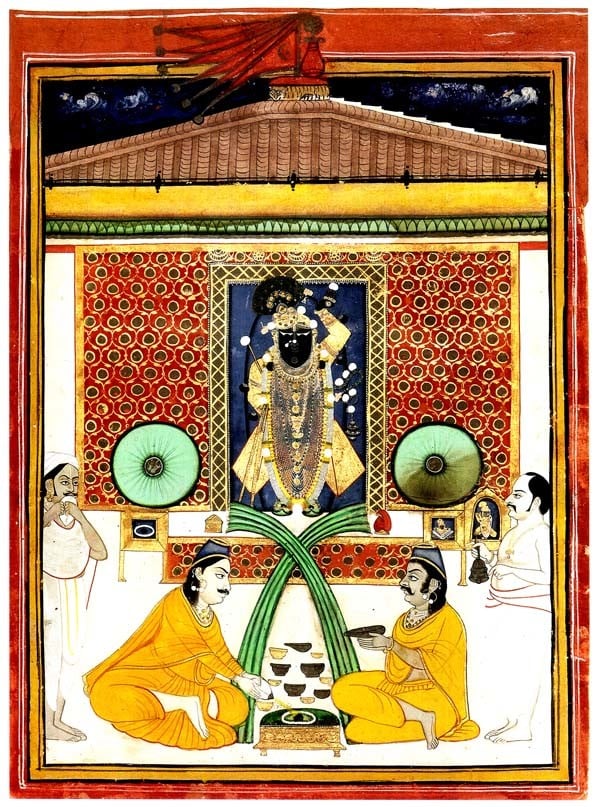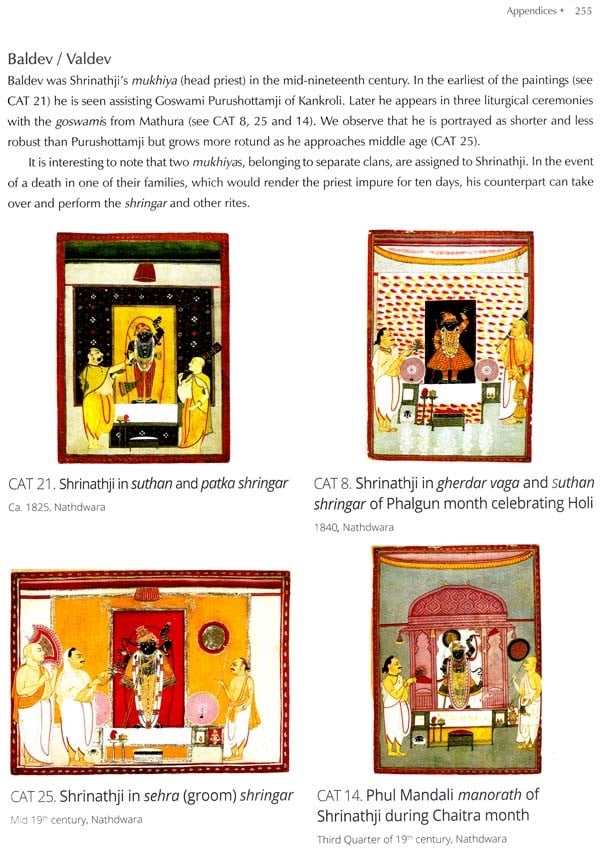
Nathdwara Paintings from the Anil Relia Collection- The Portal to Shrinath Ji
Book Specification
| Item Code: | AZE824 |
| Author: | Kalyan Krishna and Kay Talwar |
| Publisher: | Niyogi Books |
| Language: | ENGLISH |
| Edition: | 2021 |
| ISBN: | 9789389136722 |
| Pages: | 268 (Throughout Color Illustrations) |
| Cover: | HARDCOVER |
| Other Details | 12.00x9.50 inch |
| Weight | 1.47 kg |
Book Description
This catalogue explores Anil Relia's comprehensive collection of Nathdwara paintings and sketches, celebrating the wide-ranging talents of various artists. The painters are creators of icons and storytellers of Krishna's exploits. Krishna Jives in their everyday lives permeating their thoughts and guiding their brushes. At the same time, they record important events in temple history and portraits of the people who participated in these affairs.
The paintings that document festivals adhere to a traditional hieratic style, but the artist displays a freer hand in telling the exploits of Krishna. A prominent artist showcased in this collection is Ghasiram Hardev Sharma, a master draughtsman with a penchant for naturalism. He influenced a whole generation of twentieth-century artists and is still held in high esteem.
Kay Talwar holds an MA in Art History from the University of Michigan. She has co-authored with Kalyan Krishna Indian Pigment Paintings on Cloth, Calico Museum of Textiles, Ahmedabad and In Adoration of Krishna: Pichhwais for Shrinathji, TAPI Collection, Surat.
For many years she has been involved in the Indian community of Los Angeles, promoting and supporting Indian art and cultural activities. She was Chairman of the Southern Asian Art Council at the Los Angeles County Museum of Art for six years.
As the authors detail in their introduction, Nathdwara was until recently a place where time seemed to have been arrested. Eighteenth-century temple traditions and nineteenth-century workshop practice prevailed, and artists seeking to portray the playful activities of the child-god Shrinathji had only to look down their own narrow lanes to see plump cows, mischievous children and marauding monkeys just like those that romped through the narratives they vere painting in their studios. The temple doors were and still are) thrown open at set times, permitting evotees and pilgrims to take a few moments out of day to visit the deity who dwells at the centre their town, and who commands their hearts. The collection of paintings we are here, organized anand the seven to eight viewings Idanham that take place every day, the colourful festivals strewn across the seasons, and the special painting commised try priestly aristocrats and wealthy patrons, allures us impose of a community preoccupied with the life and loves of Krishna This inward-looking world was not however, immune to artistic and political developments outside its boundaries. Chapters on the fertile crow-influences among various schools of painting in the respond and on gin the role of popular prints in modernizing Nathdwara's aesthetic preferences reveal a group of artisam willing to consider new ways of seeing and depicting Further sections on painting technique help us understand the complex process of getting pigment onto a support, from making the paintbrush and preparing the pigments to the final burnishing of the surface. Even though some of these procedures have been lost, curtailed or abandoned in recent years, they constitute a determinant of the classic Nathdwara school of painting. A group of sketches takes us even closer to the creative process, as we look over the artist's shoulder while he gets his initial idea down on paper. In this chapter, The Artist's Hand Revealed, we find the drawing that first sent Anil Relia on his voyage of discovery (CAT 80).
Nathdwara became a unique centre, its rituals and traditions remaining virtually unchanged for over 300 years. Until recently it was in a time capsule, maintaining artistic traditions that had vanished from the Rajput courts. It was the archive for the styles and techniques of the courtly painting studios of Rajasthan as well as the home to its own unbroken artistic tradition for over three centuries. There were hundreds of artists from the Anger and Adi Gaur castes dedicated to serving the temple and providing mainted icons for the pilgrimage trade. It is sad to learn om Madhuvanti Ghose that all this is now being reatened, eroded by the growth of the town and e encroachment of the twenty-first century Over the last forty years Nathdwaras un has garnered die attention of scholars and produced an explosion of research on the pilgrimage cente When we first worked on the Calico Collection of Nathdwara pichhavais Indian Pigment Painting on Cloth in the early seventies there were very lew publications about Nathdwara Most notable were Robert Skelton's Rajasthani Temple Hangn of the Krishna Cult (1973), Renaldo Madure's Artistic Creativity in a Brahmin Community (1976) and Rajendra Jindel's Culture of a Sacred Town (1976). Since then outstanding art historians such as Tryna Lyons, B.N. Goswamy Amit Ambala and Madhuvanti Chose have made significant contributions to the understanding and preservation of the history of Nathdwara's artistic community In addition to the art historical aspect of the sacred town, there has been an avalanche of material published on the literary, political, socio-economic and anthropological facets of Nathdwara.
**Contents and Sample Pages**

